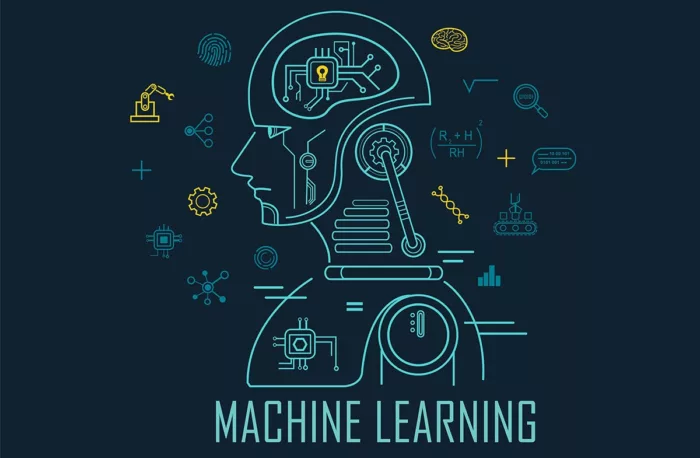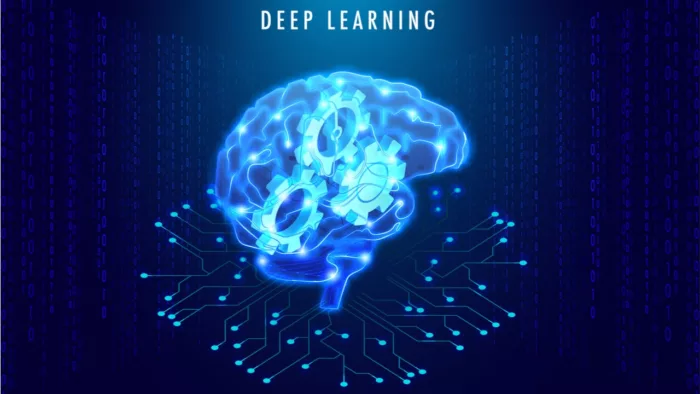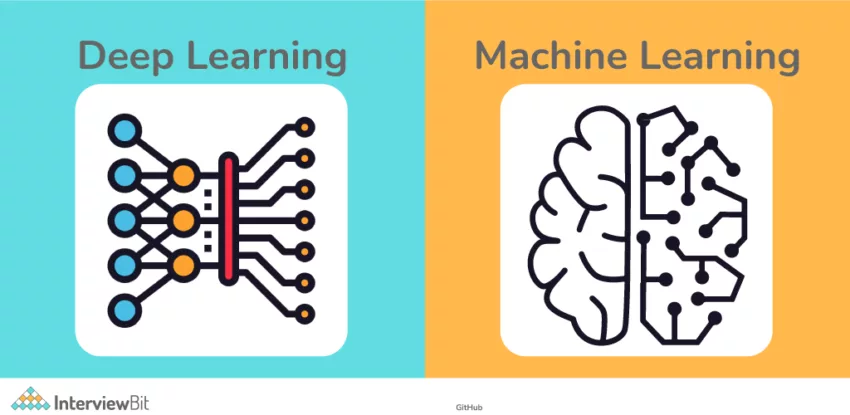AI’s landscape is abuzz with two titans: Deep Learning and Machine Learning. Both drive innovation, but their paths diverge. This blog dives into their unique strengths, applications, and how they sculpt the future of intelligent systems.
Join us as we untangle their complexities and illuminate the nuances that set them apart. Whether you’re a data wizard, an AI aficionado, or just curious, this exploration promises to demystify these cutting-edge technologies.
Table of Contents
What is Machine Learning?
Machine learning leverages statistical techniques to empower computer systems to autonomously learn and improve from data. By identifying patterns and refining their performance through iterative algorithms, these systems can make predictions and decisions across diverse applications, including predictive analytics, natural language processing, image recognition, and recommendation systems.
Similar read: What Is Spotify.Com/Pair
What is Deep Learning?
Deep learning specializes in applying artificial neural networks with multiple layers (deep neural networks) to tackle complex problems. Inspired by the brain’s architecture, these networks hierarchically process data, extracting intricate features.
Their depth allows them to automatically learn complex patterns from vast, unstructured datasets, making them powerful for image and speech recognition, natural language processing, and autonomous decision-making. Training involves feeding them large datasets, enabling them to progressively learn features through successive layers.
The Differences between Deep Learning vs Machine Learning?
Application Suitability
For optimal application selection, understanding the nuances between machine learning and deep learning is key. Machine learning’s diverse toolbox of algorithms excels in structured data scenarios, particularly regression and classification tasks where explicit rules reign supreme.
Deep learning, however, thrives on the unstructured data jungle – images, audio, and text – where complex patterns and intricate representations bloom.
Data Requirements
The type and volume of data available are the engine driving your AI project. Machine learning models can navigate smaller datasets, but unleashing the power of deep learning requires vast reserves of labeled data. Understanding these needs is crucial for planning and executing effective AI solutions.
Model Complexity
Deep learning models, with their intricate neural network architectures, are inherently more complex than traditional machine learning models. Understanding the level of complexity required for a given task helps in managing computational resources, training times, and overall system performance.
Interpretability and Explainability
Machine learning models, with their clear rules, let you see the logic behind their predictions. Deep learning, though powerful, operates as a black box. In fields like healthcare and finance, where explainability is paramount, understanding this trade-off between transparency and performance is crucial.
Technological Advancements
The ever-evolving landscape of machine learning and deep learning demands a discerning eye. Recognizing their distinct strengths equips practitioners and researchers to make informed choices, wielding the most effective tools to conquer contemporary challenges.
Similar read: Spotify Vs Apple Music
Basics of Machine Learning

Supervised Learning
Supervised learning forms the bedrock of machine learning, where algorithms leverage labeled data to map inputs to desired outputs. Acting as a teacher, the labeled data provides guidance, allowing the algorithm to generalize from specific examples and make informed predictions based on new input features.
Unsupervised Learning
Unsupervised learning, in contrast to supervised learning, involves training a machine learning algorithm on an unlabeled dataset. The algorithm explores the inherent structure within the data, aiming to uncover patterns, relationships, or groupings without predefined labels.
Clustering and dimensionality reduction are common tasks associated with unsupervised learning, offering insights into the intrinsic properties of the data.
Reinforcement Learning
Reinforcement learning (RL) is a fascinating and powerful paradigm in machine learning where an agent, like a robot or AI program, interacts with an environment and learns from its experiences. Imagine a child playing a game.
They experiment with different actions, receiving positive feedback (rewards) for successful ones and negative feedback (penalties) for mistakes. This feedback guides them towards optimal strategies, just like in RL.
Similar read: Discovering Blooket/Play
Common Algorithms in Machine Learning
Decision Trees
Decision trees are versatile and interpretable machine learning algorithms used for both classification and regression tasks. These tree-like structures consist of nodes representing decision points based on input features, branches representing possible outcomes, and leaves representing the final predictions or values.
Decision trees are particularly advantageous for capturing complex decision boundaries and are often employed in applications where transparency and interpretability are critical.
Support Vector Machines (SVM)
Support Vector Machines are powerful algorithms used for classification and regression tasks. SVMs operate by finding the optimal hyperplane that best separates data into different classes. They are effective in high-dimensional spaces and are particularly useful when dealing with complex decision boundaries.
SVMs can also be enhanced through the use of kernel functions, allowing them to handle non-linear relationships between input features.
Random Forests
Random Forests are an ensemble learning technique that leverages the strength of multiple decision trees. In this algorithm, a collection of decision trees is trained on different subsets of the data, and their predictions are combined through voting or averaging.
Random Forests enhance the robustness and generalization capabilities of individual decision trees, making them less susceptible to overfitting. This algorithm is widely used for classification and regression tasks, providing a balance between accuracy and computational efficiency.
Similar read: What Is Cloudflare Error Code 1020?
Basics of Deep Learning

Neurons and Layers
At the heart of deep learning lies the concept of artificial neural networks, inspired by the structure and function of the human brain. Neurons are the basic units that process and transmit information within a neural network. These neurons are organized into layers: the input layer receives data, hidden layers process it, and the output layer produces the final results.
Deep neural networks, or deep learning models, are characterized by the presence of multiple hidden layers, allowing them to learn hierarchical representations of data.
Activation Functions
Activation functions play a crucial role in determining the output of a neuron in a neural network. They introduce non-linearities to the model, enabling it to learn complex relationships in the data. Common activation functions include the sigmoid function, hyperbolic tangent (tanh), and rectified linear unit (ReLU).
ReLU, in particular, has gained popularity due to its efficiency in mitigating the vanishing gradient problem and accelerating the convergence of neural networks during training.
Similar read: What Is Gimkit Join
Types of Neural Networks
Feedforward Neural Networks
Feedforward neural networks, or multilayer perceptrons (MLPs), represent the simplest form of neural networks. Information flows in one direction—from the input layer through the hidden layers to the output layer—without forming cycles or loops.
These networks are adept at solving a wide range of tasks, including classification and regression problems. The depth of these networks contributes to their ability to capture intricate features and patterns in complex datasets.
Recurrent Neural Networks (RNNs)
Recurrent Neural Networks are designed to handle sequential data by introducing connections that form cycles within the network. This cyclic connectivity enables RNNs to maintain memory of past inputs, making them suitable for tasks involving time-series data, natural language processing, and speech recognition.
However, traditional RNNs face challenges such as the vanishing gradient problem, limiting their ability to capture long-range dependencies.
Convolutional Neural Networks (CNNs)
Convolutional Neural Networks are specialized for processing grid-like data, such as images. CNNs employ convolutional layers that apply filters or kernels to local regions of the input, enabling them to capture spatial hierarchies and patterns.
Pooling layers are often used to reduce the spatial dimensions of the data, while fully connected layers at the end of the network facilitate classification or regression. CNNs have demonstrated remarkable success in image recognition, object detection, and feature extraction from visual data.
Similar read: What Is Twitch.Tv/Activate Code
Key Differences between deep learning and machine learning
Deep learning and machine learning are related concepts, but they differ in their approaches and applications. Here are the key differences between deep learning and machine learning:
1. Architecture and Representation
Machine Learning (ML)
ML models typically involve selecting and engineering features from the input data. These features are used to train models that make predictions or decisions.
Deep Learning
DL models, specifically deep neural networks, automatically learn hierarchical representations of the input data. Each layer in the network learns increasingly complex features, allowing the model to capture intricate patterns.
2. Feature Learning
Machine Learning (ML)
In ML, feature engineering is a manual process where experts identify and extract relevant features from the data. The quality of these features significantly impacts the model’s performance.
Deep Learning (DL)
DL models can automatically learn features from raw data. This is particularly advantageous when dealing with high-dimensional and unstructured data, such as images, audio, and text.
3. Algorithm Complexity
Machine Learning (ML)
ML algorithms, such as decision trees or linear regression, tend to have simpler models. They rely on a limited number of features to make predictions.
Deep Learning (DL)
DL models, especially deep neural networks, have complex architectures with multiple layers and numerous parameters. This complexity allows them to learn intricate patterns and representations, making them well-suited for complex tasks.
4. Data Dependency
Machine Learning (ML)
ML algorithms may heavily depend on the quality of manually engineered features, and their performance can be sensitive to the amount and quality of labeled training data.
Deep Learning (DL)
DL models are designed to automatically learn hierarchical features, reducing the reliance on manual feature engineering. They can perform well with large amounts of raw, unprocessed data.
5. Training Data Size
Machine Learning (ML)
ML models may require a substantial amount of labeled training data to generalize well to new, unseen examples. Their performance may plateau as the amount of data increases.
Deep Learning (DL)
DL models, especially deep neural networks, often benefit from large amounts of data for training. They thrive on big datasets, and their performance may continue to improve with more data.
6. Computation Power
Machine Learning (ML)
ML algorithms can often run on traditional computing architectures, and their computational requirements are generally lower compared to deep learning.
Deep Learning (DL)
DL models, particularly deep neural networks, may require specialized hardware like GPUs or TPUs for efficient training due to their complex architectures and the need for parallel processing.
7. Applications
Machine Learning (ML)
ML techniques find applications in a wide range of tasks, including regression, classification, clustering, and reinforcement learning. Common applications include spam filtering, recommendation systems, and fraud detection.
Deep Learning (DL)
DL excels in tasks that involve complex, high-dimensional data, such as image and speech recognition, natural language processing (NLP), and playing strategic games. DL has shown remarkable success in these domains due to its ability to automatically learn hierarchical representations.
Similar read: What Is Ford Online Pay Stub
Conclusion:
While machine learning encompasses a diverse set of algorithms relying on manually engineered features, deep learning, as a subset, emphasizes the automatic learning of hierarchical representations from raw data using neural networks. Each approach has its strengths and weaknesses, making them suitable for different types of problems and data.
- What is Epic Games Launcher and How to Install It? - July 15, 2024
- What Is Audius Music Streaming App and How Does it Work? - July 13, 2024
- The 10 Best Astronomy Apps for Stargazing - July 12, 2024



